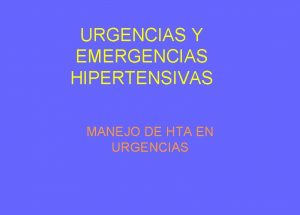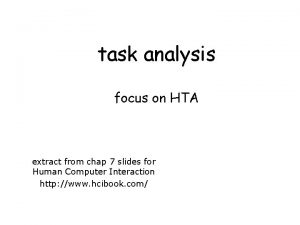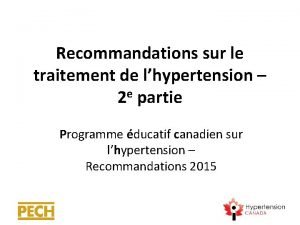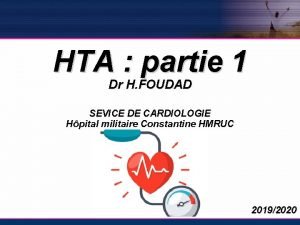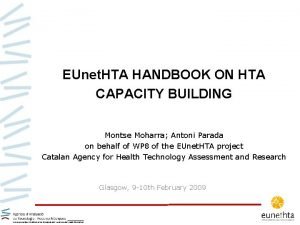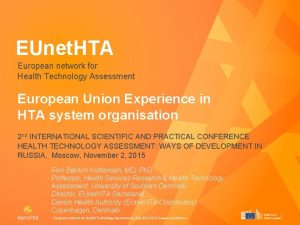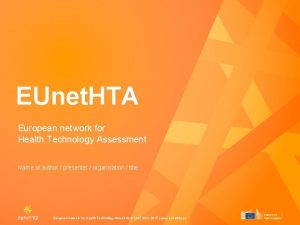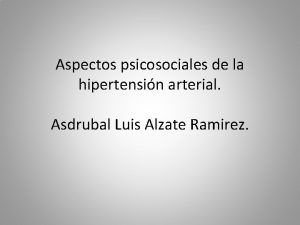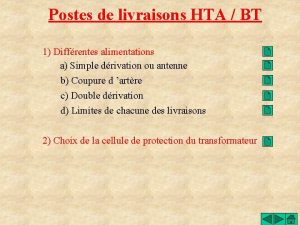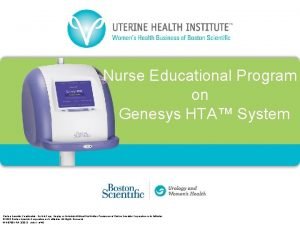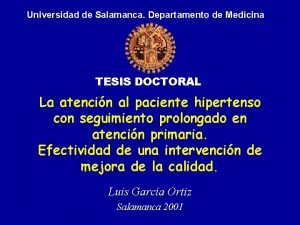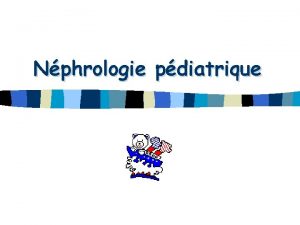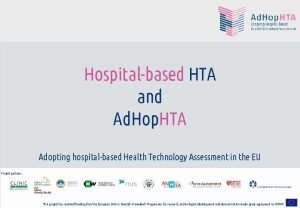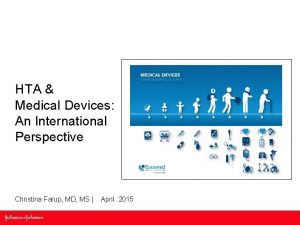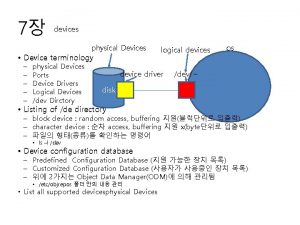HTA Methods Guidelines for Medical Devices How can



















- Slides: 19

HTA Methods Guidelines for Medical Devices: How can We Address the Gaps? The International Federation of Medical and Biological Engineering Perspective Presented by: Julie Polisena, Ph. D

Disclosure • IFMBE and the University of Warwick provided financial support for this study. • Authors declare no COI.

IFMBE The International Federation for Medical and Biological Engineering (IFMBE) is primarily a federation of national and transnational societies. These professional organizations represent interests in medical and biological engineering. The IFMBE is also a Non-Governmental Organization (NGO) for the United Nations and the World Health Organization (WHO).

Introduction Drug Therapies Medical Devices

Introduction

Study Objectives • Review and identify gaps in HTA MD guidelines • Propose recommendations • Comparison between guidelines and recommendations • Reach consensus among clinical and biomedical engineers

Methods • Focus groups o Narrative summary of HTA MD guidelines o Discussions with IFMBE-HTA Division • Differences between drugs and MDs • Impact on HTA methods • Recommendations for MD assessment

Methods • Modified Delphi survey o. Survey design o. Online o. Delphi process o. Agreement level on 30 recommendations o 5 -point Likert scale

Results • Focus Group o Product lifecycle o Clinical evaluation o Issues in use o Costs and economic evaluation

Results: Product Lifecycle

Results: Clinical Evaluation

Results: Issues in Use

Results: Costs and Economic Evaluation

Results • Delphi survey Characteristics of Panelists (N=32): 37. 6% response rate 17 countries > 25% were clinical engineers or managers > 65% graduate studies > 70% involved in HTA

Results • Delphi survey o Consensus on recommendations o Consensus with strong agreement reached in 90% recommendations o Consensus with agreement reached in 10% recommendations

Discussion • Comments: o Feasibility of accurate assessment throughout product lifecycle o Interoperability of medical device with other devices or within hospital systems o Availability of data or evidence o Adoption of medical device in organization o New methods may be required o Risk assessment

Limitations • Uncertain about interpretation of recommendations and descriptions in survey • Not all perspectives were represented

Directions for Future Research

Reference • Polisena J, Castaldo R, Ciani O, Federici C, Borsci S, Ritrovato M, Clark D, and Pecchia L. “HTA Methods Guidelines for Medical Devices: How can We Address the Gaps? ” The International Federation of Medical and Biological Engineering Perspective. 2018. (International Journal of Technology Assessment in Health Care, 34: 3 (2018), 276– 289))
 Chief medical officers physical activity guidelines
Chief medical officers physical activity guidelines North carolina medical examiner
North carolina medical examiner Manejo de emergencia hipertensiva
Manejo de emergencia hipertensiva Hta hci
Hta hci Contoh hta
Contoh hta Inhibiteur calcique hta
Inhibiteur calcique hta Amaday pl 5/4
Amaday pl 5/4 Hta volo dependante
Hta volo dependante Hta maligne
Hta maligne Pre hta
Pre hta Hta
Hta Eunet hta
Eunet hta Eunet hta
Eunet hta Eunet hta
Eunet hta Estadios de la hipertensión arterial según la oms
Estadios de la hipertensión arterial según la oms Hta
Hta Textual hta
Textual hta Double dérivation hta
Double dérivation hta Genesys hta vs novasure
Genesys hta vs novasure Clasificacion de la presion arterial segun jnc 8
Clasificacion de la presion arterial segun jnc 8


